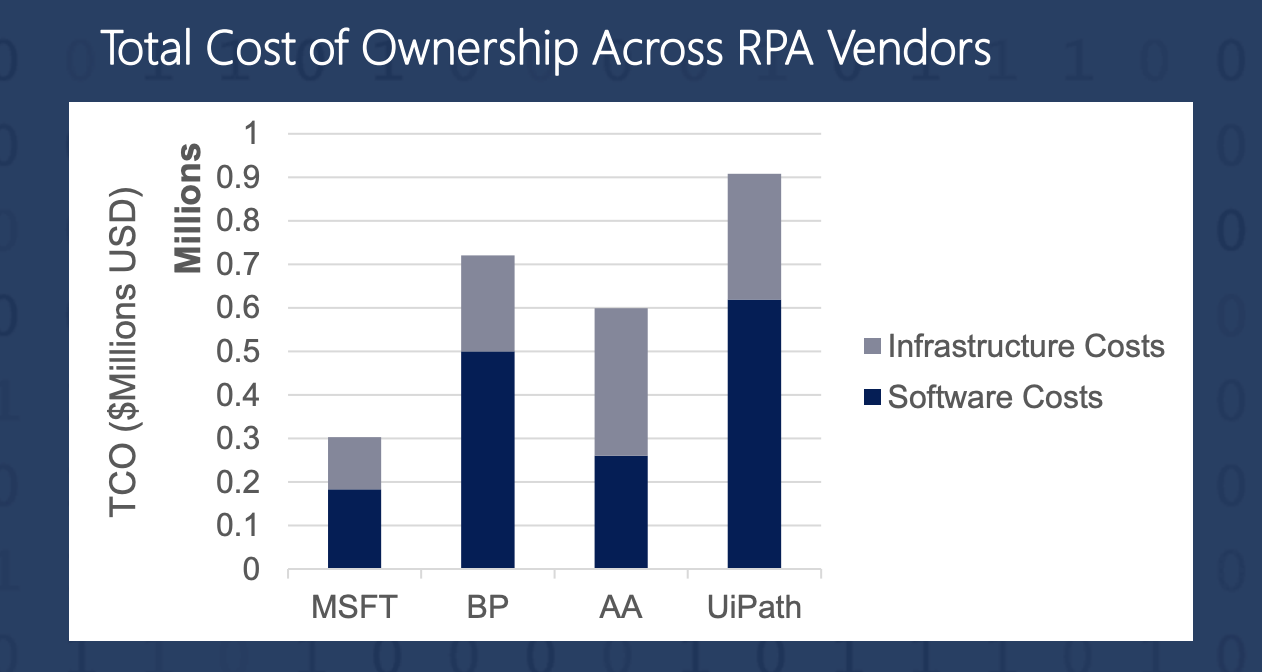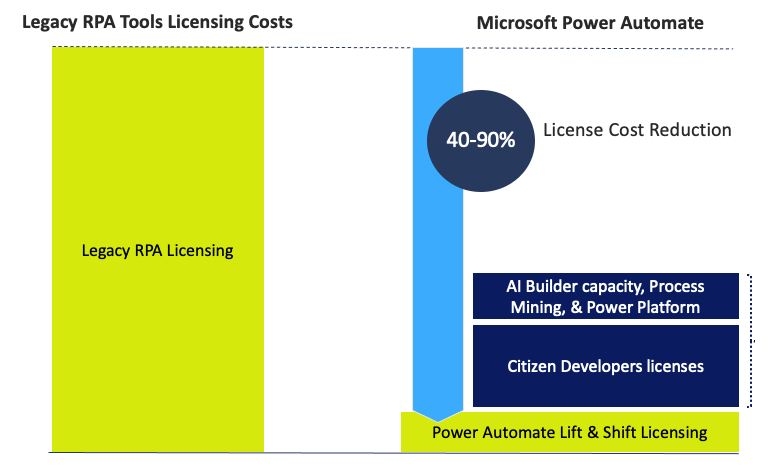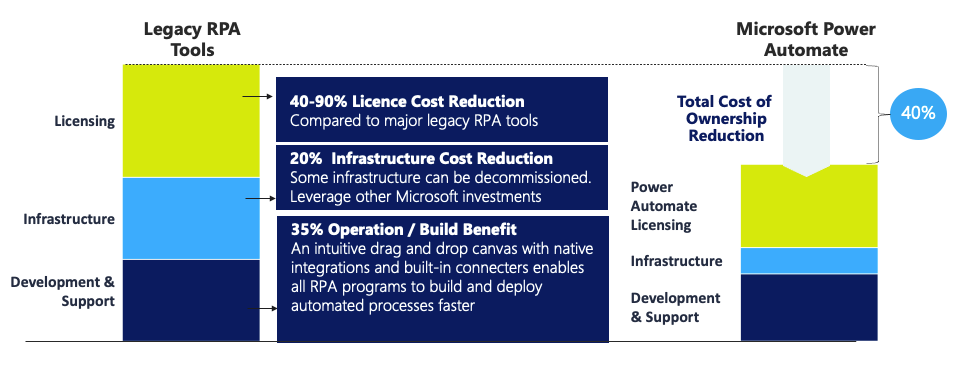How Microsoft Power Automate Reduces the Total Cost of Ownership for Automation
It’s well known in the automation space that Microsoft Power Automate significantly reduces the total cost of ownership (TCO) for automation. The sheer cost reduction that Power Automate affords is the primary reason so many organizations are looking to leave their expensive, technically complex legacy RPA tools for Microsoft.
How Microsoft Power Automate is able to reduce automation’s total cost of ownership can be explained by breaking down RPA’s TCO according to the following pillars, which are precisely the same cost components that need to be considered and analyzed for any RPA Migration business case:
- Licensing costs
- Infrastructure costs
- Development and support costs
Microsoft Power Automate Licensing Cost Reductions
Comparing licensing costs and pricing models across RPA platforms can be a challenging exercise. This is because pricing for enterprise RPA software is usually unavailable and only accessible after lengthy discussions with software sales reps.
If pricing models are available, they can be ambiguous at best and normally resemble a black box. Microsoft, on the other hand, is incredibly transparent and upfront with their pricing which can be accessed here. Notably, Microsoft offers different pricing structures. Licenses can be purchased by the user or by flow. Organizations can also choose to go the utilization route and pay by flow run, paying for automations as they’re executed.
Strictly from a licensing perspective, Microsoft Power Automate simply offers more competitive and cost-effective pricing when compared to its competitors. Stacked up against the other major, legacy RPA tools that make up the leader category of the automation vendor market, Power Automate delivers a 40-90% reduction in licensing costs.

Source: Forrester Total Economic Impact of Power Automate, 2020

Microsoft Power Automate Infrastructure Cost Reduction
Licensing is a significant portion of automation’s TCO, but it’s not the only component. The infrastructure needed to implement and manage an RPA practice is another major cost that makes up the total cost of ownership for automation. As with licensing, switching from a legacy RPA platform to Microsoft’s next-generation intelligent automation platform in Power Automate also delivers cost savings when it comes to infrastructure.
Microsoft Power Automate reduces infrastructure costs for automation by up to 20% two ways:
- By migrating your RPA estate to Power Automate, some infrastructure like data and orchestrator servers can be decommissioned.
- Power Automate also enables you to leverage previous investments in Microsoft’s suite of products (whether it's Azure for computing, Dynamics 365, etc.) to shave further infrastructure costs off your RPA OpEx (operational expense).
Microsoft Power Automate Development & Support Cost Reduction
As demonstrated in our previous blog post – The Total Cost of Ownership Components to Consider for RPA Migrations – Development & Support is the most demanding and expensive component in an organization’s automation practice. Naturally, Microsoft also delivers cost savings from a development and support standpoint as well.
Because all business users and technologists alike are so familiar with the Microsoft UI (user interface), designing and delivering automations in Power Automate is accelerated. An intuitive drag-and-drop canvas with native integrations and built-in connectors enables all RPA programs to build and deploy automated processes faster, realizing up to a 35% lift in automation delivery and the ROI that comes with that scale.

Not only does the familiarity with Microsoft’s user interface provide a lift in enterprise automation production, but so does the simplicity with which automated processes can be designed and delivered.
Power Automate removes the technical complexity that once throttled automation and reserved it for only highly skilled technical employees, opening the door to a citizen development approach—a major contributor to the added business value Power Automate delivers that we’ll be diving into in our next post.
Share this
Recent Stories

Automation Year in Review 2023

Who is Microsoft Power Automate Really For?



